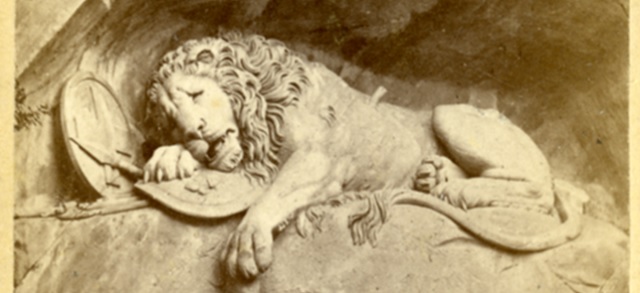
Monuments Class Projects
Architect/Sculptor of Monument
Ernst Rietschel (1804-1861), Adolf Von Donndorf (1835-1916), Gustav Kietz (1824-1908), Johannes Schilling (1828-1910)
Preview

Medium
photograph, carte-de-viste
Keywords
Martin Luther, Martin Luther Monument, Protestant Reformation, Lutheranism, Worms, Diet of Worms, Frederick the Wise, Philip the Maganimous, Johann Reuchlin, Philip Melanchthon, Petrus Waldus, John Wycliffe, Johann Hus, Girolamo Savonarola
Physical Dimensions
3.75 x 2.30"
Date of Publication
2025
Date of Publication
c. 1868-90
Name of Monument
Luther Monument
Date of Completion or Dedication of Monument
6-25-1868
City of Monument
Worms
Location within City
Lutherplatz
State/Province of Monument
Rhineland-Palatinate
Country of Monument
Germany
Description
The Martin Luther Monument in Worms, Germany commemorates Luther's defiance of the Roman Catholic Church at the Diet of Worms. Luther ignited the Protestant Revolution and brought great change to Europe. The bronze sculptures show Luther surrounded by other pivotal figures in the Reformation, including Wycliffe, Savonarola, Hus, Frederick the Wise, and Melanchthon. They stand triumphantly, enclosed by low walls in their very own "Mighty Fortress".
Publisher
Unknown



Comments
The Luther Monument in Worms, Germany, stands as a testament to Martin Luther’s legacy and the wider Protestant Reformation. Luther (1483-1546) was a German teacher and monk who brought about the Protestant Reformation when he challenged the Catholic Church's teachings.
On October 31, 1517, Luther posted his Ninety-Five Theses, which challenged the teachings of the Catholic Church. In 1521, the Diet of Worms met as the assembly of the Holy Roman Empire to charge him with heresy. Refusing to recant his beliefs, Luther publicly burned the papal bull and was promptly excommunicated from the Catholic Church. This marked the symbolic beginning of the Lutheran Church.
Initially, the idea to erect a monument to Luther in Worms was proposed by Dr Friederich Eich and Eduard Franz Keim, who founded a monument society in 1856. The Luther Monument was finally dedicated on June 25, 1868 at a ceremony attended by the Prussian King. Architecturally, the Luther Monument bears a Neoclassical design style as well as a neo-Renaissance style due to its symmetrical formation. Ernst Reitschel, an artist from Dresden, was enlisted to design the monument. However, Reitschel died in 1861 after only completing two statues. Three students of Reitschel’s, Adolf von Donndorf, Gustav Kietz, and Johannes Schilling completed the rest of the statues based on Rietschel’s original plans. Luther’s famous song, “Ein feste Burg” (“A Mighty Fortress is Our God”) inspired Reitschel’s design for the monument's square base surrounded by a wall on three sides.
Intertwined with the walls and within the stone fortress are twelve pedestals. Luther's statue stands in the center, surrounded by other figures connected to the wider Reformation. These are John Wycliff (1328-1384), Petrus Waldus (1140-1205), Girolamo Savonarola (1452-1498), Jan Hus (1369-1415), Frederick the Wise (1463-1525), Margrave Philipp (1669-1711), Johannes Reuchlin (1455-1522), and Philipp Melanchthon (1497-1560). Additionally, three female statues symbolize the cities of Speyer, Augsburg and Magdeburg.
Standing on the largest pedestal in the middle of the monument is Martin Luther. He faces the Bishop’s Palace, the place where he stood before the emperor of the Holy Roman Empire and defied the Roman Catholic Church. Reitschel’s statue of Luther heavily influenced other sculpture representing him. Copies of it can be found all over the world, including the German cities of Dresden, Elze, and Eisenach, as well as in Brazil, Canada, Chile, and the United States.